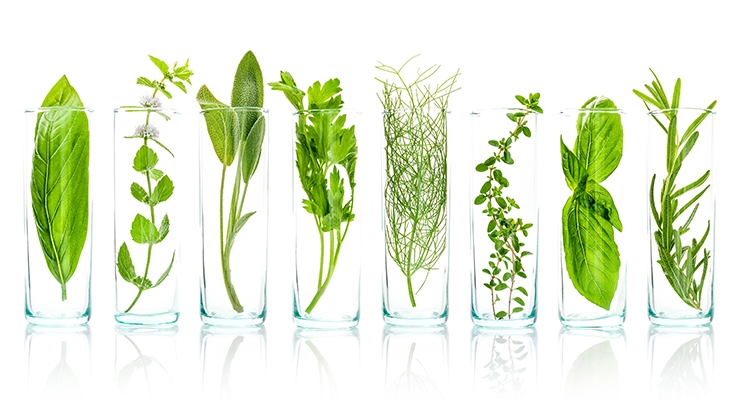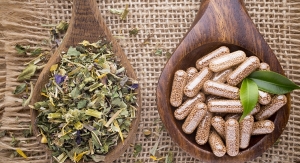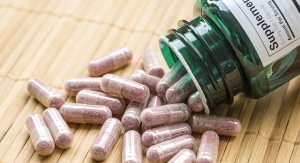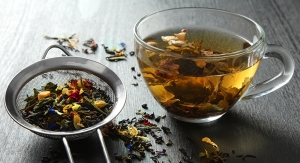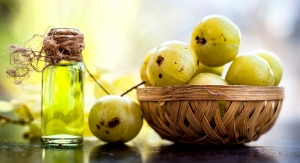By Holly Johnson, PhD, American Herbal Products Association (AHPA)01.07.20
The American Herbal Products Association (AHPA) regularly reviews scientific literature for new research that may be useful to the herbal products and supplement industries. The following are some recent articles published in peer-reviewed journals.
New Library of Traditional Chinese Medicinal Plant Extracts at NCI for Bioactivity Evaluations & Chemical Profiling
A prototype Traditional Chinese Medicine (TCM) plant extract library has been established at the U.S. National Cancer Institute (NCI), which contains both the organic and aqueous extracts of 132 authenticated medicinal plant species that collectively represent the potential therapeutic contents of most commonly used TCM herbal prescriptions. This report outlined the methodology used to generate the library and the preliminary assessment of the anti-proliferative activity of this crude extract library in NCI-60 human cancer cell lines screen. The authors reported the chemical profiling and metabolome comparison analysis of four commonly used TCM plants: Brucea javanica; Dioscorea nipponica; Cynanchum atratum; and Salvia miltiorrhiza.
Fitoerapia, September 2019
https://doi.org/10.1016/j.fitote.2019.104285
Review of Chamomile Phytomedicines to Treat Skin Disorders
This review aimed to catalog inventions that have used Matricaria species as the active component for skin disease treatment. A search of patents was performed in four specialized patent databases, which have reported the discovery of pharmaceutical bioproducts that used Matricaria species in its composition for skin treatment. The authors noticed that the pharmaceutical industry has driven efforts and investment to produce medicines for the dermatopathies, using species of this genus as an active principle. The study predicted that new Matricaria-based medicines may reach the pharmaceutical market in the coming years.
Fitoterapia, October 2019
https://doi.org/10.1016/j.fitote.2019.104267
Analysis of Pyrrolizidine Alkaloids in Liqueurs, Elixirs & Herbal Juices
This study aimed to detect and quantify the pyrrolizidine alkaloids (PAs) in liqueurs, elixirs, and herbal juices. The PA content was determined in the form of a single sum parameter using HPLC-ESI-MS/MS and a stable isotope-labeled internal standard. Overall, 56 products available at German pharmacies, drugstores, or Internet shops were analyzed, comprising in total 38 samples of liqueurs (mainly bitters), 12 samples of plant elixirs, and six different herbal juices. The results showed that nine out of 38 liqueurs were PA-positive (24%). The total amount of PAs ranged from non-detectable to 9.5 μg/kg. Seven out of 10 elixirs were PA-positive (70%) with a maximum PA-content of 3,121 μg/kg. Four out of six plant juices were PA-positive (67%) with an average of 4.4 μg/kg (PA-positive samples only).
Fitoterapia, July 2019
https://doi.org/10.1016/j.fitote.2019.104172
Discrimination of Gynostemma Species Using Plastid Molecular Markers
The authors of this study used chloroplast universal regions and their polymorphism to distinguish G. pentaphyllum from other Gynostemma species. The authors established a multiplex allele-specific PCR for the authentication of G. pentaphyllum from other species. These primers were successful to analyze the dried tea samples of Gynostemma as well. The developed molecular markers could authenticate different Gynostemma species and its products, helping prevent mistaken-identity of this medicinal herb.
Fitoterapia, October 2019
https://doi.org/10.1016/j.fitote.2019.104295
Anti-Hyperglycemia Effects of Rhizoma Coptidis Alkaloids: A Systematic Review of Modern Pharmacological Studies
In this review, the authors combined the latest advances and systematically summarized the mechanisms of Rhizoma Coptidis (RC) alkaloids in treating hyperglycemia and diabetic nephropathy to provide a deeper understanding of these natural alkaloids. The important role of gut microbiota associated with the glucose metabolism was also reviewed. RC alkaloids have been widely used for the treatment of diabetes and hyperglycemia with unconspicuous toxicities and side effects. Numerous studies showed that RC alkaloids balanced the glucose homeostasis not only by widely recognizing insulin resistance pathways, but also by promoting insulin secretion, regulating intestinal hormones, ameliorating gut microbiota structures, and many other ways.
Fitoterapia, April 2019
https://doi.org/10.1016/j.fitote.2019.03.003
Enhanced Oral Bioavailability of Curcumin Using Solid Lipid Nanoparticles
The authors of this study fabricated solid lipid nanoparticles (SLNs) using tristearin and polyethylene glycol (PEG)ylated emulsifiers to control the oral bioavailability of curcumin. The curcumin permeation rate through mucus-covered gut epithelium in vitro was dependent on the size/surface charge of the micelles. Curcumin loaded in long-PEGylated SLNs rapidly permeated the epithelium due to the neutral surface charge of the micelles, resulting in a >12.0-fold increase in bioavailability compared to curcumin solution in a rat model. These results suggest that the bioavailability of curcumin can be controlled by modulating the interfacial properties of SLNs, which will facilitate the development of curcumin formulations for use in functional foods and pharmaceuticals.
Food Chemistry, January 2020
https://doi.org/10.1016/j.foodchem.2019.125328
Holly Johnson, PhD
American Herbal Products
Association (AHPA)
Holly E. Johnson PhD, is the chief science officer at the American Herbal Products Association (AHPA) where she is the primary scientific resource for the organization, providing individualized technical guidance to member organizations and helping the herbal industry use the latest science, technology and research to ensure consumers continue to have informed access to innovative, safe and effective herbal products. Dr. Johnson took her PhD in Pharmacognosy at the College of Pharmacy, University of Illinois – Chicago (UIC), under renowned Pharmacognosist and researcher Dr. Norman Farnsworth. She is currently a Research Associate with the National Tropical Botanical Garden and serves on AOAC Stakeholders Panels and Expert Review Panels for Foods and Dietary Supplements. She is a member of the USP Medical Cannabis Expert Panel, the Editorial Board of the AOAC International Journal, and also serves on the Advisory Boards of the American Botanical Council and the American Herbal Pharmacoepia. She can be reached at hjohnson@ahpa.org; 301-588-1171, ext. 103.
New Library of Traditional Chinese Medicinal Plant Extracts at NCI for Bioactivity Evaluations & Chemical Profiling
A prototype Traditional Chinese Medicine (TCM) plant extract library has been established at the U.S. National Cancer Institute (NCI), which contains both the organic and aqueous extracts of 132 authenticated medicinal plant species that collectively represent the potential therapeutic contents of most commonly used TCM herbal prescriptions. This report outlined the methodology used to generate the library and the preliminary assessment of the anti-proliferative activity of this crude extract library in NCI-60 human cancer cell lines screen. The authors reported the chemical profiling and metabolome comparison analysis of four commonly used TCM plants: Brucea javanica; Dioscorea nipponica; Cynanchum atratum; and Salvia miltiorrhiza.
Fitoerapia, September 2019
https://doi.org/10.1016/j.fitote.2019.104285
Review of Chamomile Phytomedicines to Treat Skin Disorders
This review aimed to catalog inventions that have used Matricaria species as the active component for skin disease treatment. A search of patents was performed in four specialized patent databases, which have reported the discovery of pharmaceutical bioproducts that used Matricaria species in its composition for skin treatment. The authors noticed that the pharmaceutical industry has driven efforts and investment to produce medicines for the dermatopathies, using species of this genus as an active principle. The study predicted that new Matricaria-based medicines may reach the pharmaceutical market in the coming years.
Fitoterapia, October 2019
https://doi.org/10.1016/j.fitote.2019.104267
Analysis of Pyrrolizidine Alkaloids in Liqueurs, Elixirs & Herbal Juices
This study aimed to detect and quantify the pyrrolizidine alkaloids (PAs) in liqueurs, elixirs, and herbal juices. The PA content was determined in the form of a single sum parameter using HPLC-ESI-MS/MS and a stable isotope-labeled internal standard. Overall, 56 products available at German pharmacies, drugstores, or Internet shops were analyzed, comprising in total 38 samples of liqueurs (mainly bitters), 12 samples of plant elixirs, and six different herbal juices. The results showed that nine out of 38 liqueurs were PA-positive (24%). The total amount of PAs ranged from non-detectable to 9.5 μg/kg. Seven out of 10 elixirs were PA-positive (70%) with a maximum PA-content of 3,121 μg/kg. Four out of six plant juices were PA-positive (67%) with an average of 4.4 μg/kg (PA-positive samples only).
Fitoterapia, July 2019
https://doi.org/10.1016/j.fitote.2019.104172
Discrimination of Gynostemma Species Using Plastid Molecular Markers
The authors of this study used chloroplast universal regions and their polymorphism to distinguish G. pentaphyllum from other Gynostemma species. The authors established a multiplex allele-specific PCR for the authentication of G. pentaphyllum from other species. These primers were successful to analyze the dried tea samples of Gynostemma as well. The developed molecular markers could authenticate different Gynostemma species and its products, helping prevent mistaken-identity of this medicinal herb.
Fitoterapia, October 2019
https://doi.org/10.1016/j.fitote.2019.104295
Anti-Hyperglycemia Effects of Rhizoma Coptidis Alkaloids: A Systematic Review of Modern Pharmacological Studies
In this review, the authors combined the latest advances and systematically summarized the mechanisms of Rhizoma Coptidis (RC) alkaloids in treating hyperglycemia and diabetic nephropathy to provide a deeper understanding of these natural alkaloids. The important role of gut microbiota associated with the glucose metabolism was also reviewed. RC alkaloids have been widely used for the treatment of diabetes and hyperglycemia with unconspicuous toxicities and side effects. Numerous studies showed that RC alkaloids balanced the glucose homeostasis not only by widely recognizing insulin resistance pathways, but also by promoting insulin secretion, regulating intestinal hormones, ameliorating gut microbiota structures, and many other ways.
Fitoterapia, April 2019
https://doi.org/10.1016/j.fitote.2019.03.003
Enhanced Oral Bioavailability of Curcumin Using Solid Lipid Nanoparticles
The authors of this study fabricated solid lipid nanoparticles (SLNs) using tristearin and polyethylene glycol (PEG)ylated emulsifiers to control the oral bioavailability of curcumin. The curcumin permeation rate through mucus-covered gut epithelium in vitro was dependent on the size/surface charge of the micelles. Curcumin loaded in long-PEGylated SLNs rapidly permeated the epithelium due to the neutral surface charge of the micelles, resulting in a >12.0-fold increase in bioavailability compared to curcumin solution in a rat model. These results suggest that the bioavailability of curcumin can be controlled by modulating the interfacial properties of SLNs, which will facilitate the development of curcumin formulations for use in functional foods and pharmaceuticals.
Food Chemistry, January 2020
https://doi.org/10.1016/j.foodchem.2019.125328
Holly Johnson, PhD
American Herbal Products
Association (AHPA)
Holly E. Johnson PhD, is the chief science officer at the American Herbal Products Association (AHPA) where she is the primary scientific resource for the organization, providing individualized technical guidance to member organizations and helping the herbal industry use the latest science, technology and research to ensure consumers continue to have informed access to innovative, safe and effective herbal products. Dr. Johnson took her PhD in Pharmacognosy at the College of Pharmacy, University of Illinois – Chicago (UIC), under renowned Pharmacognosist and researcher Dr. Norman Farnsworth. She is currently a Research Associate with the National Tropical Botanical Garden and serves on AOAC Stakeholders Panels and Expert Review Panels for Foods and Dietary Supplements. She is a member of the USP Medical Cannabis Expert Panel, the Editorial Board of the AOAC International Journal, and also serves on the Advisory Boards of the American Botanical Council and the American Herbal Pharmacoepia. She can be reached at hjohnson@ahpa.org; 301-588-1171, ext. 103.

